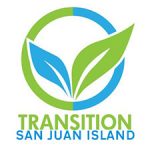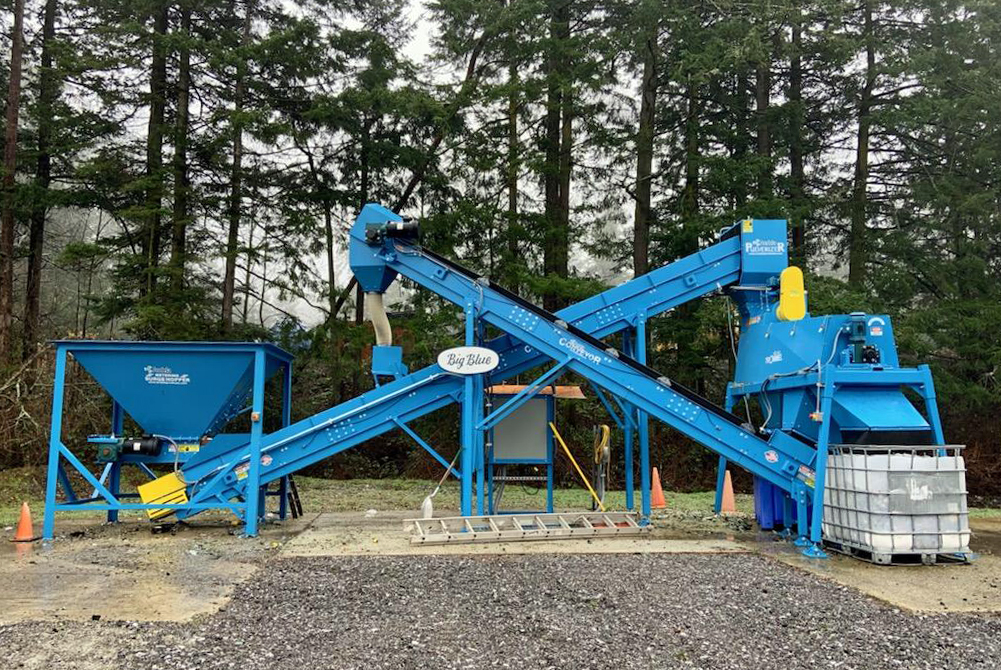Transition San Juan Island considers new approaches to waste glass
Posted February 19, 2022 at 12:18 pm by San Juan Update
 Transition San Juan Island’s Waste Reduction Guild shares their perspective on the challenges and opportunities associated with the stewardship of waste glass on San Juan Island.
Transition San Juan Island’s Waste Reduction Guild shares their perspective on the challenges and opportunities associated with the stewardship of waste glass on San Juan Island.
Glass is a modern wonder but the heavy, voluminous containers and window panes that come from melting the quartzite sands of time (plus some chemical magic) to create ubiquitous products, does not degrade and is costly to transport. The modern process of making glass is energy intensive (using heat up to 1700 degrees Fahrenheit) to transform crystalline solids to liquid to form a million shapes. Well over a century of discarded glass may exist far longer than human civilization and become a lasting testament to our unprecedented wastefulness.
We feel that many Islanders try to do the right thing with recycling containers and packaging resulting from our consumptive lifestyles. Do you feel frustrated with the uncertainty and inefficiency of commingled recycling and feel a personal responsibility to do better? If that is the case, then you should be impressed, as we are, with the inspiring community achievements in dealing with solid waste by both Orcas and Lopez islands. Real progress toward a more responsible, technological approach to solid waste management on our larger populated islands is currently separate and unequal despite the oversight of the San Juan County Department of Environmental Stewardship.
A bit of ‘trashy history’ may be in order. In 2011 the county wanted out of operating transfer stations and put out a Request for Proposals. About the same time, the Orcas Exchange, a grassroots non-profit begun in the early 1980s to short-stop some of the increasing solid waste for reuse at the landfill, burned to the ground. The Orcas Island community banded together to propose a more nuanced solution and took over transfer station operations from the County in 2013 as Orcas Recycling Services. They leased County land and built a new Exchange in 2017. They also attracted stellar non-profit board members, employed staff and volunteers, wrote grants, and otherwise raised funds in order to effectively divide and conquer the major elements of their solid waste stream. The Lopez Island community and non-profits took over there, too, and have since voted to tax themselves with strong voter support and attract scores of diligent volunteers to work with a small staff to elegantly tease apart their waste stream for reuse and efficient recycling.
Here, Lautenbach Recycling won a contract to take over the operation of the Sutton Road transfer station. This forward-thinking and respected company improved the site and efficiency of operations markedly. However, in our view, haphazard recycling is commingled to be trucked to various locations in Western Washington for partial sorting and re-transfer to other sites, or to be eventually dumped with garbage at a distant landfill. Our island’s solution – despite having the largest population, most visitors, plentiful brick and mortar businesses, the largest town center, a busy port, the seat of county government and a bustling, upscale Roche Harbor Resort – appears to be costly, wasteful and fossil fuel intensive. It is hard to understand why this is still the case, but the situation is environmentally unacceptable in 2022. We can and must do better.
Early efforts at grinding glass on Orcas were not highly successful, but the purchase and installation of Big Blue, an Andela Glass Crusher (made in America with a price tag of approximately $150,000) in late 2021 by Orcas Recycling Services, shows great promise. A few weeks back we watched it work – far more quietly than imagined – and handled the fine, rounded colored sand that resulted. A ton of glass becomes a ton of sand with dozens of potential uses. The onsite price point for colored sand can be set lower than for sand trucked in to capture some revenue for non-profit crusher operations.
Why we settle for mid-20th century solid waste management processes while touting ourselves as a progressive community, a vacation destination, and environmentally engaged, is a complex mash of island politics, rampant growth and an unrealistic faith in capitalism to respond to negative externalities. Of course, we have made great strides. Dumping old boat batteries, garbage, tires and glass in the salt chuck seems to have become a thing of the ignorant past.
We don’t know just how much waste glass is commingled here, let alone what percentage of that tonnage is actually being properly recycled for reuse on the mainland. It’s also unclear just how much glass is considered unclean – or ruins potentially recyclable cardboard with broken shards – and trucked on across the state to a methane-belching landfill. Orcas now diverts glass to feed into “Big Blue,” but has just begun to collect data, and the summer increase of solid waste is still months away. We can only estimate by using data from nearby areas. In Kitsap County, studies of separated curbside recycling indicate that 23.2% by weight is mixed glass. Applied to 2021 annual tonnage at Orcas Recycling Services, that equates to about 184 tons of glass.
Interestingly, all garbage generated in 2021 on San Juan Island funneled through the Sutton Road transfer station and thereby becomes Lautenbach’s responsibility. For 2021 they reported an annual total of 6,865 tons (compared to an Orcas total of 5,551 tons), but reported only 490 tons of comingled recycling (Orcas had about 840 tons). Extrapolating a likely proportional tonnage for San Juan Island, one would expect about 1,200 tons of glass. Unfortunately it appears that a significant number of our residents toss glass in with mixed garbage that is headed to the landfill.
We are looking for collaborators to join our grassroots group in supporting the County and entrepreneurial efforts to separate recyclables again. This would redirect glass to a crusher here to reduce disposal costs for the consumer, reduce carbon emissions in transport as well as methane release at landfills, and to create useful inert sand. We have a wonderful example of how to accomplish this from our neighbors at Orcas Recycling Services.
You can support the San Juan Update by doing business with our loyal advertisers, and by making a one-time contribution or a recurring donation.
Categories: Around Here











No comments yet. Be the first!
By submitting a comment you grant the San Juan Update a perpetual license to reproduce your words and name/web site in attribution. Inappropriate, irrelevant and contentious comments may not be published at an admin's discretion. Your email is used for verification purposes only, it will never be shared.